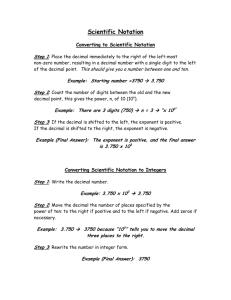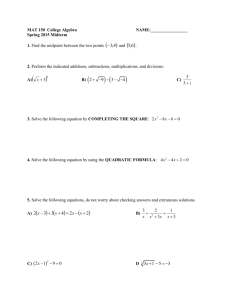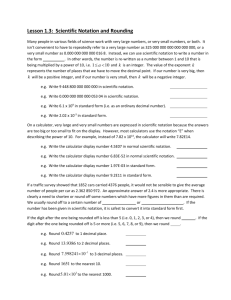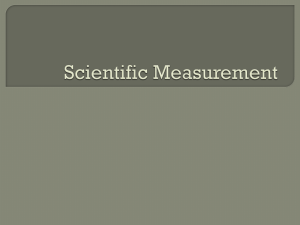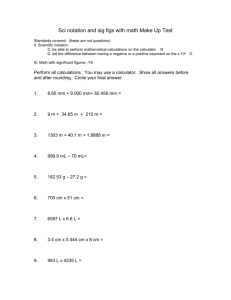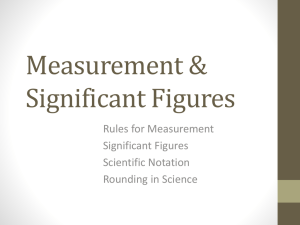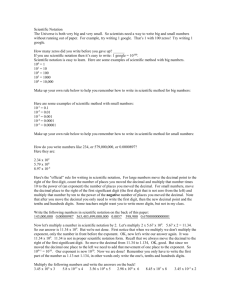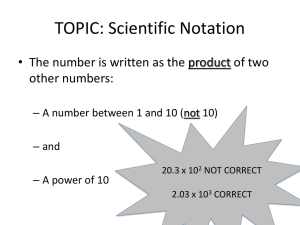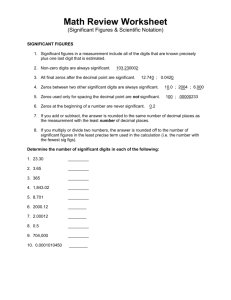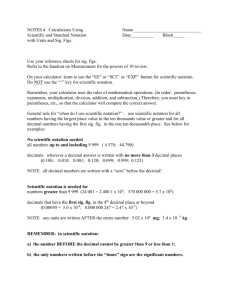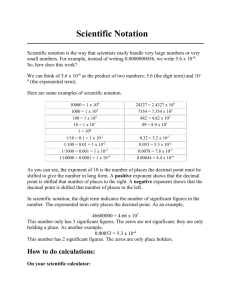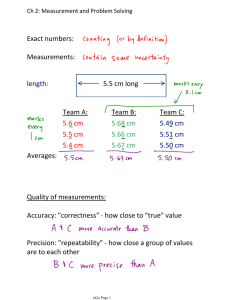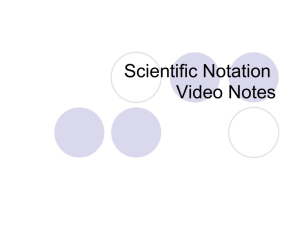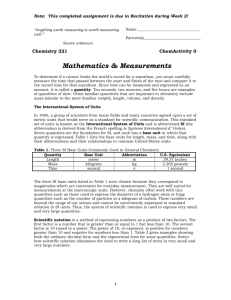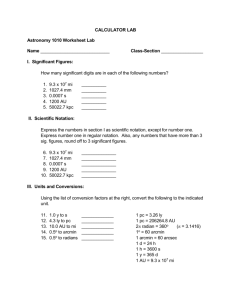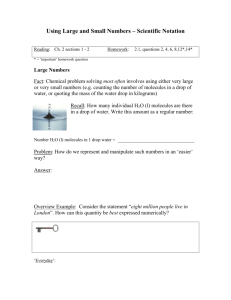Scientific Notation
advertisement
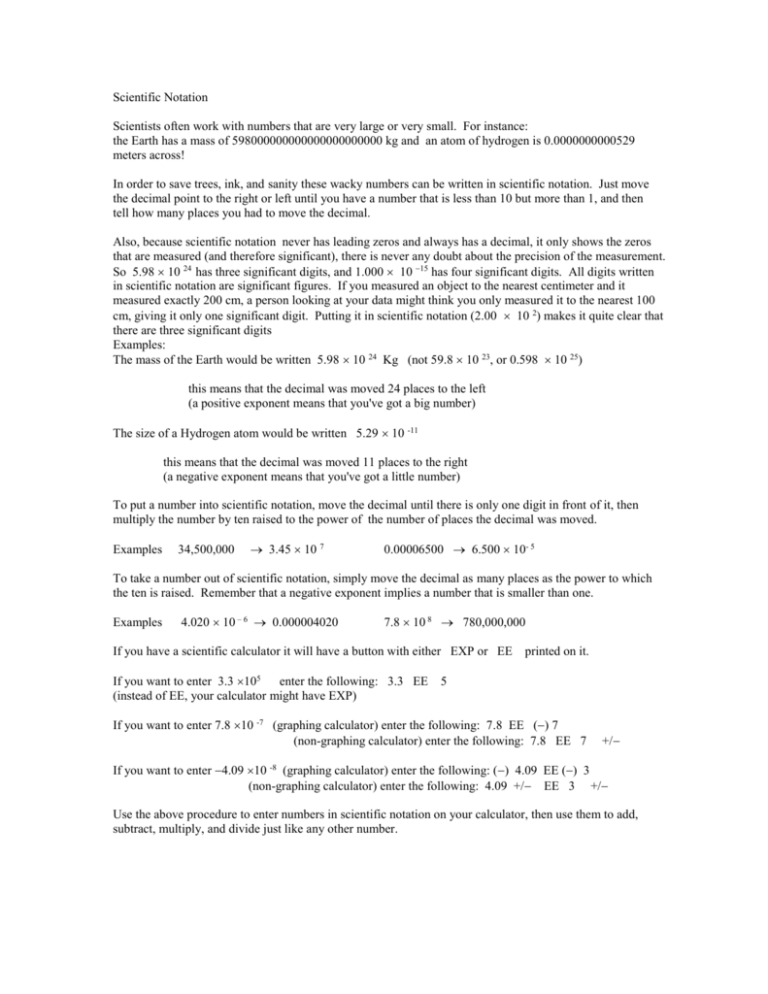
Scientific Notation Scientists often work with numbers that are very large or very small. For instance: the Earth has a mass of 598000000000000000000000 kg and an atom of hydrogen is 0.0000000000529 meters across! In order to save trees, ink, and sanity these wacky numbers can be written in scientific notation. Just move the decimal point to the right or left until you have a number that is less than 10 but more than 1, and then tell how many places you had to move the decimal. Also, because scientific notation never has leading zeros and always has a decimal, it only shows the zeros that are measured (and therefore significant), there is never any doubt about the precision of the measurement. So 5.98 10 24 has three significant digits, and 1.000 10 15 has four significant digits. All digits written in scientific notation are significant figures. If you measured an object to the nearest centimeter and it measured exactly 200 cm, a person looking at your data might think you only measured it to the nearest 100 cm, giving it only one significant digit. Putting it in scientific notation (2.00 10 2) makes it quite clear that there are three significant digits Examples: The mass of the Earth would be written 5.98 10 24 Kg (not 59.8 10 23, or 0.598 10 25) this means that the decimal was moved 24 places to the left (a positive exponent means that you've got a big number) The size of a Hydrogen atom would be written 5.29 10 -11 this means that the decimal was moved 11 places to the right (a negative exponent means that you've got a little number) To put a number into scientific notation, move the decimal until there is only one digit in front of it, then multiply the number by ten raised to the power of the number of places the decimal was moved. Examples 34,500,000 3.45 10 7 0.00006500 6.500 10- 5 To take a number out of scientific notation, simply move the decimal as many places as the power to which the ten is raised. Remember that a negative exponent implies a number that is smaller than one. Examples 4.020 10 – 6 0.000004020 7.8 10 8 780,000,000 If you have a scientific calculator it will have a button with either EXP or EE printed on it. If you want to enter 3.3 105 enter the following: 3.3 EE (instead of EE, your calculator might have EXP) 5 If you want to enter 7.8 10 -7 (graphing calculator) enter the following: 7.8 EE () 7 (non-graphing calculator) enter the following: 7.8 EE 7 +/ If you want to enter 4.09 10 -8 (graphing calculator) enter the following: () 4.09 EE () 3 (non-graphing calculator) enter the following: 4.09 +/ EE 3 +/ Use the above procedure to enter numbers in scientific notation on your calculator, then use them to add, subtract, multiply, and divide just like any other number.

